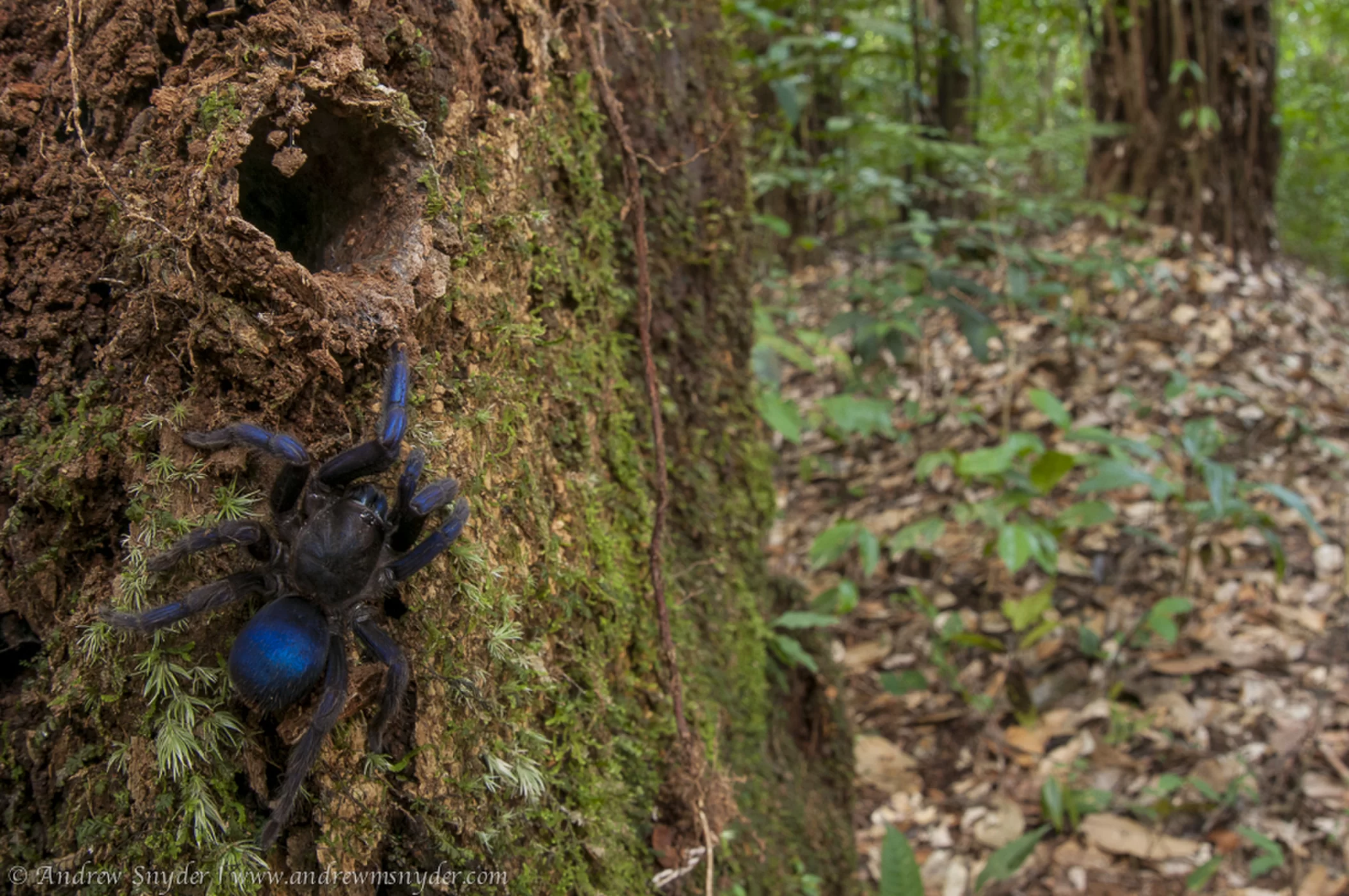
On an expedition to Guyana, scientists were excited to discover several new animal species, including a handful of beetles and butterflies. However, it was a small, iridescent blue tarantula that really took the prize. The amazing arachnid was found hiding in a hollowed-out tree, and is believed to have been unknown to science.
The spider was found in March 2014 during the second Biodiversity Assessment Team expedition, a month-long survey in which researchers looked for new species in Guyana's Kaieteur National Park. The expedition's discoveries have been released recently.
Related: Horrifying video shows giant wasp paralyze tarantula so living spider can host eggs for weeks
According to the World Wildlife Foundation, the spider is among dozens of new species found in the untouched part of Guyana, many of which are believed to be endemic to the secluded area.
The tarantula was originally found by Andrew Snyder, a Ph.D. student at the University of Mississippi who specializes in reptiles and amphibians in the Guiana Shield, an area of nature encompassing 270 million hectares of land stretching from Guyana to Venezuela, Colombia and northern Brazil.
In a blog post about the discovery posted by the Global Wildlife Conservation, Snyder explained how when his light beam first reflected off a small glint of "brilliant cobalt blue" on a rotted out five-foot-tall tree stump, he originally dismissed it as simply the eye of an ordinary spider, as they can reflect blue when light is shone on them. However, closer investigation revealed that the spider his light caught was far from ordinary.
Related: New tarantula species named after Gabriel Garcia Marquez
"The blue that my light beam illuminated in fact was not the eye shine of a spider, but rather the forelimbs of a small tarantula," Snyder wrote in his blog. "I immediately knew that this one was unlike any species I have encountered before."
It's still not clear why the creature has such beautiful colorings. Snyder told Newsweek that although the creature may seem striking to the human eye, it's possible that this tarantula doesn't stand out quite as much to other animals because organisms see the world very differently than humans.
The tarantula is new to science, and perhaps even new to the human eye. Although unnamed, early analysis suggests it may belong to a subfamily of tarantulas known as Ischnocolinae family, Science Alert reported. According to a 2014 study on arachnids, this group is set apart from other spiders due to the division of their tarsal scopula, dense tufts of hair found at the end of hunting spiders' legs, especially tarantulas.
Uncommon Knowledge
Newsweek is committed to challenging conventional wisdom and finding connections in the search for common ground.
Newsweek is committed to challenging conventional wisdom and finding connections in the search for common ground.
About the writer
To read how Newsweek uses AI as a newsroom tool, Click here.








